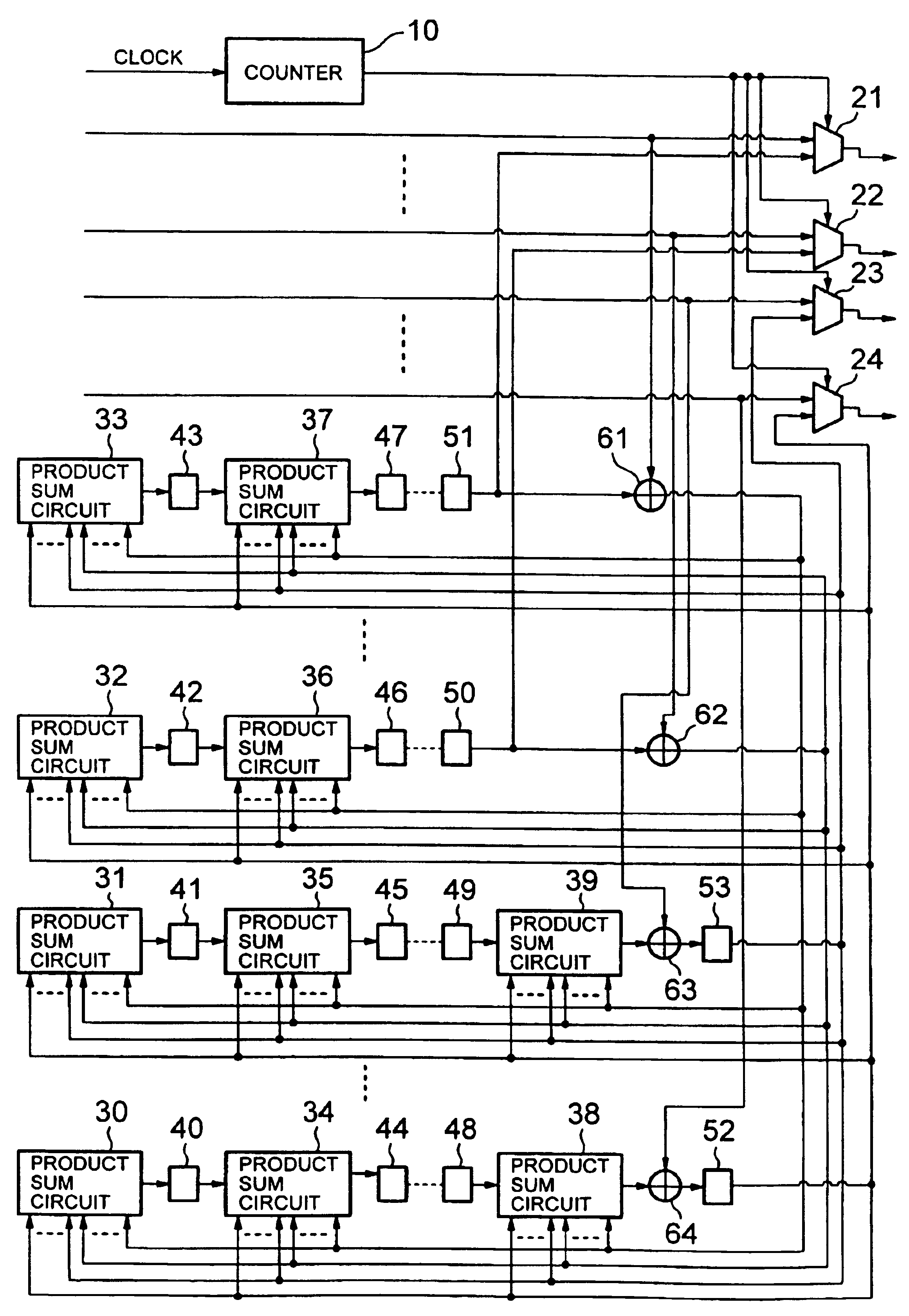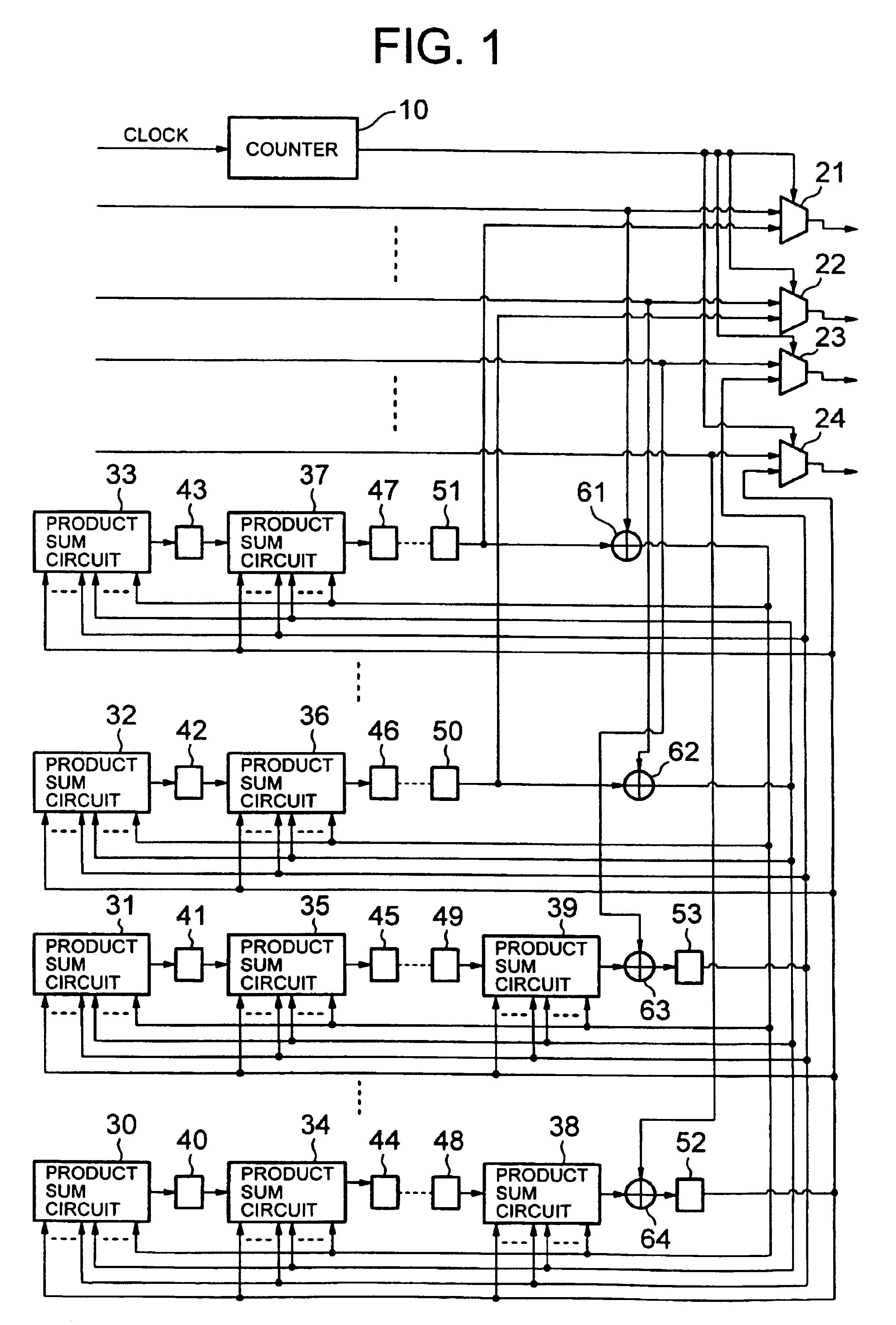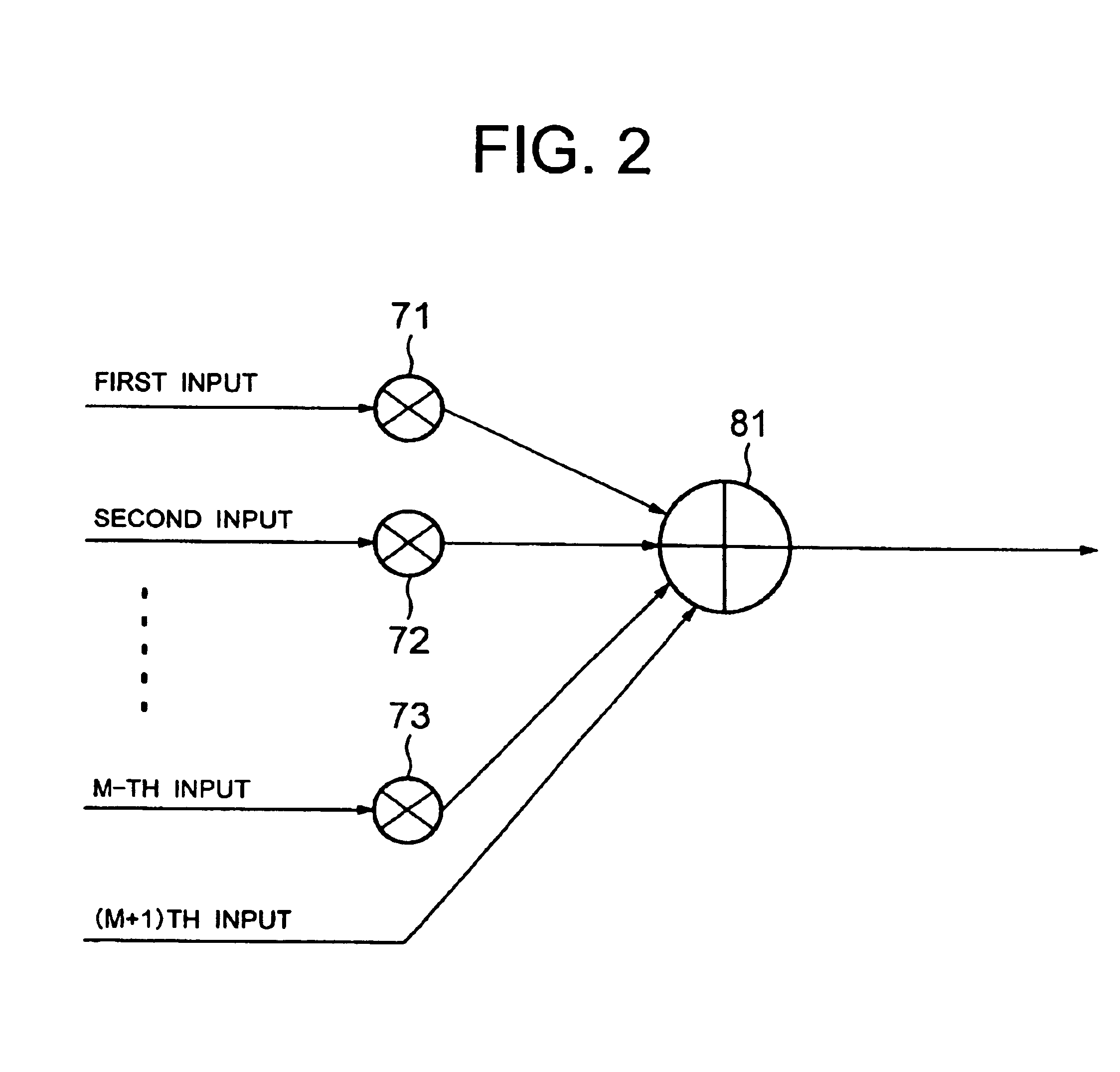Parallel processing Reed-Solomon encoding circuit and method
- Summary
- Abstract
- Description
- Claims
- Application Information
AI Technical Summary
Benefits of technology
Problems solved by technology
Method used
Image
Examples
Embodiment Construction
The preferred embodiments of the present invention will be described below with reference to the drawings. FIG. 1 is a block diagram showing the configuration of a parallel processing Reed-Solomon encoding circuit according to an embodiment of the invention. In FIG. 1, the parallel processing Reed-Solomon encoding circuit separates an input signal into M blocks in parallel, where the code signal length is N blocks, the redundancy check length is K blocks, and the parallel processing number is M. However, in the case where the code signal length N is indivisible by the parallel processing number M, an initial auxiliary signal is appended to the initial location of an information signal. The initial auxiliary signal length L is a minimum natural number L where (N+L) is divisible by M. The value of the initial auxiliary signal is set to 0.
The input signal separated in parallel into M block is branched into two, one being entered into the first input of a first selector circuit 24 to an...
PUM
 Login to View More
Login to View More Abstract
Description
Claims
Application Information
 Login to View More
Login to View More - R&D
- Intellectual Property
- Life Sciences
- Materials
- Tech Scout
- Unparalleled Data Quality
- Higher Quality Content
- 60% Fewer Hallucinations
Browse by: Latest US Patents, China's latest patents, Technical Efficacy Thesaurus, Application Domain, Technology Topic, Popular Technical Reports.
© 2025 PatSnap. All rights reserved.Legal|Privacy policy|Modern Slavery Act Transparency Statement|Sitemap|About US| Contact US: help@patsnap.com



